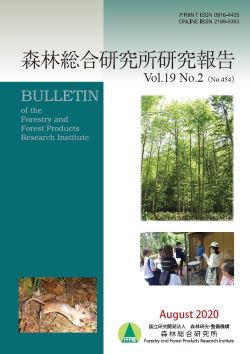Volume 19, Issue 2
Displaying 1-7 of 7 articles from this issue
- |<
- <
- 1
- >
- >|
-
2020Volume 19Issue 2 Pages 115-119
Published: 2020
Released on J-STAGE: February 24, 2021
Download PDF (931K) -
2020Volume 19Issue 2 Pages 121-135
Published: 2020
Released on J-STAGE: February 24, 2021
Download PDF (2509K) -
2020Volume 19Issue 2 Pages 137-151
Published: 2020
Released on J-STAGE: February 24, 2021
Download PDF (16444K) -
2020Volume 19Issue 2 Pages 153-157
Published: 2020
Released on J-STAGE: February 24, 2021
Download PDF (1397K) -
2020Volume 19Issue 2 Pages 159-184
Published: 2020
Released on J-STAGE: February 24, 2021
Download PDF (2371K) -
2020Volume 19Issue 2 Pages 185-194
Published: 2020
Released on J-STAGE: February 24, 2021
Download PDF (7684K) -
2020Volume 19Issue 2 Pages 195-217
Published: 2020
Released on J-STAGE: February 24, 2021
Download PDF (2227K)
- |<
- <
- 1
- >
- >|
